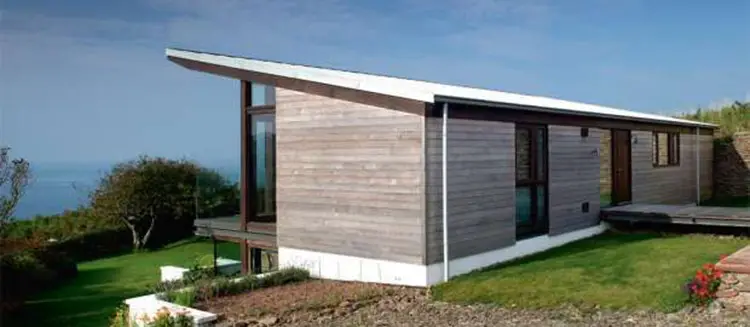We’ve gather that most valuable info on how to measure a roof. If you are thinking of installing a new roof or adding new shingles to your roof, you will need to know the precise dimensions of your roof.
Contents
The closer you can get to an exact number when measuring roof area, the more you can save on your roofing materials and supplies. Just remember that the more complex your roof is, the harder it is to measure.
Basic approach
There is nothing quite like climbing up on your roof and taking very specific measurements by hand. However, the good news is that you can achieve the same results with just a basic knowledge of geometry.
If you have a shed roof or a gable roof, you are in luck – these are the easiest roof types to measure. But there are many other roof types that you might encounter. These are four of the most common for residential homeowners:
- Hip
- Gable
- Mansard
- Gambrel
The important point to notice here is that all of these roof shapes can be thought of in terms of triangle shapes and trapezoid shapes. It’s just a matter of determining the precise shape of your roof, dividing it into the right geometric shapes, calculating the area of each shape, and then adding up all of the geometric shapes.
Conversely, you could measure the roof from the ground using a very rough approximation. In this case, you would simply measure the base footprint of your home (length x width).
You would then consider the pitch of your roof (i.e. how steep it is), in order to apply a slope multiplier. Trying to measure from the ground works if you have a gable roof, but what if you have a more complex type of roof?
That’s why we will work through the basic calculations to come up with a general approach to make things easier.
Basic calculations
All you need is a basic understanding of geometry in order to come up with a roof estimate. There are three shapes that we must consider – the triangle, the rectangle and the trapezoid. Once we know how to calculate the area of these shapes, it becomes a very simple mathematical operation.
- Triangle = (Base x Height) / 2
- Rectangle = (Base x Height)
- Trapezoid = (Base 1 + Base 2) x Height / 2
With just these three formulas (results in sq. feet), you have all that you need.
Gable roof example
Let’s use a gable roof as an example. If you look at a gable roof, you can see that it is comprised of two basic geometric planes that meet at the top ridge. Each geometric plane is a rectangle, so we can use our formula for a rectangle (Base x Height).
Once we come up with the math for one of these planes, we multiply this measurement by 2 since there are two planes that make up the roof.
Shed roof example
The calculations are even easier if you just have a lean-to shed roof. This might be the case, for example, if you have built an addition on your home. In this case, there is just one geometric plane, and it is just a rectangle. So, once you measure the rectangle, your job is over.

Octagon roof example
What if you are trying to calculate an octagon-shaped roof? This might be the case if you have a garden gazebo where the octagon roof is very common. In this case, you just need to realize that an octagon is comprised of 8 separate triangles, all joined together.
In this case, you simply apply the formula of a triangle. Once you measure the footage, all that you need to do is multiply that measurement by 8 to arrive at the proper sq. feet.
Other complex roof examples
Any roof can be simply divided into squares, rectangles, triangles, and trapezoids. If this is not initially clear, just sketch the shape of your roof on a sheet of paper.
Start by sketching all the squares and rectangles, and then look for all the triangles. In this way, even if you have a hip-shaped roof on one part of your home and a gable-shaped roof on the other side of your home, you can still come up with an approximation of the overall roof.
For example, a hip roof consists of 4 different geometric planes, 2 of which are trapezoids and 2 of which are triangles. Just calculate each figure, and then add them all up.
Roof size and roofing materials
Of course, the real reason why you are calculating the roof area is because you need roofing materials. In most cases, this is shingles. But it could also be slate tiles or a metal material. All roofing materials are calculated in terms of squares, and not square feet.
The roofing and construction industry has determined that one roof square = 100 square feet.
Thus, if you measure the roof at 500 square feet, that translates into 5 roofing squares. When you go to your local home improvement store, that is the number that you need to focus on, not the actual dimensions of your roof.
This should make intuitive sense, especially if you have a complex roof with many different slopes, angles, hips and valleys.
Just one important point to keep in mind here – you will want to build in a small amount of overage when you measure and purchase roofing supplies.
As a general rule of thumb, that amount is 10% for a traditional gable roof and 15-20% for a more complex roof shape (such as a mansard roof). You don’t want to over-estimate too much, though, otherwise your bill is going to be entirely too high!
Last update on 2023-07-04 / Affiliate links / Images from Amazon Product Advertising API
